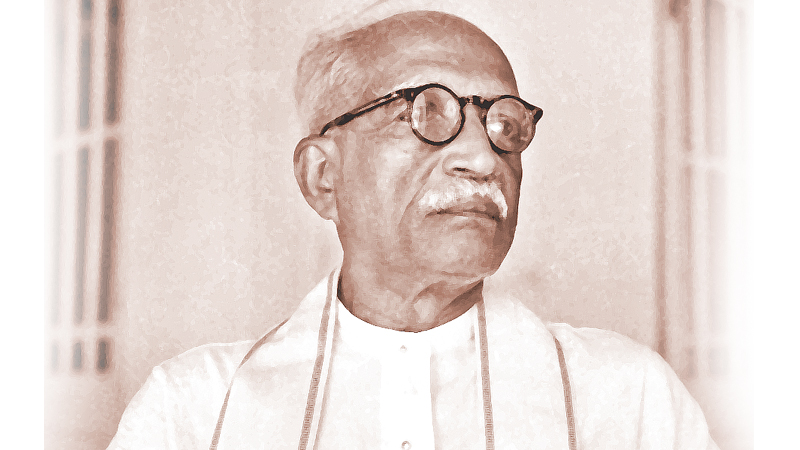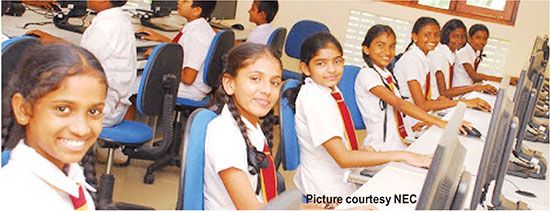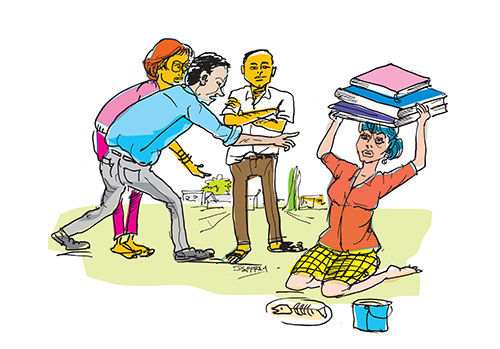In December 2024, the Sunday Observer reported that the Vice Chancellor (VC) of the University of Colombo (UoC) had announced plans to reduce the University’s reliance on State funding by increasing foreign student intake and strengthening private sector ties. With 225 international students, and plans to double that number, the VC claimed the University was on track to meet its goal. His remarks echo national strategies and global trends aimed at decoupling public universities from state-funded education.
Marketised model

University of Peradeniya
The VC’s words reflect an ideology that is profoundly reshaping higher education. The shift from viewing universities as pillars of democracy to self-funded “autonomous” entities serving private interests has been gradual. This vision, rooted in a neoliberal framework, backed by institutions like the World Bank, re-orients universities to support a global marketplace of free-flowing capital, unrestrained by national borders and other barriers (Harvey, 2006). People’s aspirations for good jobs, strong public services, and a thriving environment, when clashing with market logic, are dismissed as outdated, impractical, ineffective, or inefficient.
In other words, a fully functioning market requires “inefficiencies” like free education to be weakened. Along these lines, a World Bank (2017) report on Sri Lanka’s higher education policy notes, “The private sector in higher education currently operates under heavy restrictions” (p.20). These so-called restrictions are our policies for free education that identify the State as the primary provider of education. The Bank continues, “Attracting the participation of [the private] sector, both for-profit and nonprofit, is crucial to meet the double challenge of improving access and quality, given capacity and resource constraints” (p.20).
In search of alternatives

University of Jaffna
Globally, such reforms are shifting the state’s role into a mainly regulatory one, marketising/ commodifying education, and developing pathways for private actors to enter the sector. Therefore, it is no surprise that Sri Lanka has encouraged the expansion of private and fee-levying state education, while offering subsidies, like land, infrastructure, and utilities, to new higher educational enterprises, and proposing a voucher system, and introducing loans and public-private partnerships to support them.
The bolstering of private higher education has been accompanied by drastic cuts in public education funding. For decades, Sri Lanka’s allocations for education have been abysmally low, relative to regional and global figures, and by 2022 had fallen to 1.5% of GDP, down from 4.25 in the 1960s (Sarvananthan, 2020). The shortfall in funds needed for universities to function must be bridged somehow. Universities have been left to find alternative ways to cover operational costs.
At the UoC, strategies include tapping into the international student market and furthering private sector ties. The University of Peradeniya can leverage its beautiful campus and extensive infrastructure for this purpose. In contrast, universities like the University of Jaffna (UoJ), scarred by war, ongoing militarisation, and under-resourced in the Northern Province, or Uva Wellassa University (UWU), young, understaffed, and distant from Colombo, have fewer avenues for generating funds.
Intensifying disparities
Such differences are reflected in 2022 UGC data, with the UoC generating one-fifth of its income through earned funds, while UoJ and UWU earned under 2%. They suggest that peripheral universities are in danger of weakening further if earnings are identified as our primary funding source for higher education. (See graph)

Disparities go beyond funding, however, indicating that the problem is even greater. UGC data reveals that UoJ enrols more students with fewer academic staff than UoC. To illustrate, UoC has a 1:1 ratio of probationary lecturers to professors, but for UoJ, the ratio is 3:1. UoJ also relies more on temporary staff (40% of 867) compared to UoC (30% of 959; UGC, 2022). Enrolments seem to have risen steeply for UoJ after the war; in 2007, UoC had twice the numbers enrolled relative to UoJ, but by 2022, UoJ slightly surpassed UoC enrolments. However, according to UGC data, per-student income (state allocations and generated funds combined) for UoJ (LKR 326) is roughly one-third of UoC’s (LKR 959), reflecting the significant inequality in access to resources (assuming that ‘income’ reflects access to resources universities can deploy to achieve their goals). These figures also indicate that the rapid enrolment increases UoJ made were without commensurate State funding.
These differences stem from the unequal political influence each institution possesses, which have also shaped disparities in allocations historically (CEPA, 2017). But the core question is not whether disparities exist, because they clearly do, but whether the current trajectory of reforms will reduce them, and whether our universities’ free education mandate and by extension a democratic and just society, can be fulfilled and/or achieved by such reforms. My answer to both is No.
Serious consequences
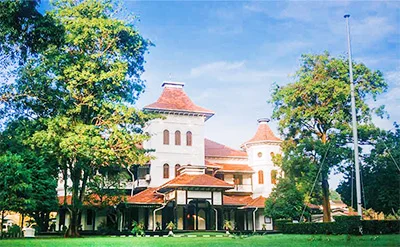
University of Colombo
Firstly, neoliberal policies worldwide have widened social disparities (Mogendi, 2024; Ulhaq et al., 2023; Yulia et al., 2023). When universities prioritise revenue generation, their core undertaking, free undergraduate education, is sidelined. Even now, some students in hardship drop out. Expanding fee-levying programmes will likely expand accessibility for the middle classes but because universities will have to prioritise those with the capacity to pay, such a policy will also expand inaccessibility for those to whom free education remains the only possibility.
Furthermore, education reforms are not isolated as similar shifts are happening in relation to other hard-won democratic rights as well. As protections are rolled back to remove market “impediments,” precariousness grows through increased inaccessibility to health, landlessness, indebtedness, and informalised labour. These impacts are felt more acutely at the periphery (such as at UoJ in higher education), far from where capital is concentrated.
Secondly, this model makes universities servants of a greater power – those who determine whether a university deserves funds. About 15 years ago, the UGC admitted students to a new programme in my Faculty, but failed to provide the promised facilities. Unable to run the programme properly, the Faculty declined to admit new students. At the time, the University saw the provision of these resources as the government’s binding obligation. A decade later in 2019, when the President demanded a sharp increase in intake, universities, though already stretched, complied. While established universities were able to resist to some extent, others could not, making the burden far heavier for them.
Universities seem to have gradually lost their sense of worth, becoming more subservient to authority and the Government. This shift stems partly from reforms that have placed them on the defensive, having to justify their performance, efficiency, and value as a public good. True, public accountability is essential, and universities can do better. Yet accountability, as the UGC has conceived it, is disempowering and has undermined the effectiveness of existing mechanism (e.g., Faculty Boards and Senates) which are more democratic than what the UGC has newly instituted (e.g., UGC-instituted top-down quality assurance framework now in place). While other accountability mechanisms may be needed, they should not weaken internal mechanisms.
Thirdly, if this reform path continues, we may ultimately encounter performance-based funding or “incentives for good performance.” The 2023 National Education Policy Framework makes such a proposal, which could widen disparities if implemented, as the already disadvantaged universities will surely struggle to “perform.” The competitive environment performance-based funding fosters, another hallmark of an “efficient” market, will also limit space for universities to collaboratively address shared challenges.
In conclusion
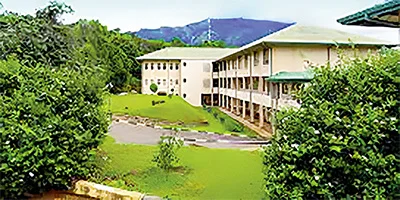
University of Sabaragamuwa
Universities can help build the society we want, which for me is a just, kind, and democratic one. To realise these aspirations, we need a strong, accessible, and enriching education system.
While the 1960s and 1970s showed concerns about inequality and disparities driving policies on education globally (Klees, 2008), today’s dominant views generally disregard these issues. Increasing State investments in education and welfare are rarely supported globally. Instead, policy discussions centre on quality assurance-type governance structures. Countries like Sri Lanka, pushed into austerity measures under crisis, are construed as simply not able to afford to imagine a bolder vision for themselves. Looking back at the debates that shaped our education policy in the 1930s and 40s, however, it is clear that many in power believed we could not afford free education back then. Yet, because of tremendous public pressure, the free education policy was implemented.
Today, however, we live in a world that, as Klees puts it, “increasingly sing[s] one tune: neoliberalism.” Maybe it’s time we change the tune, toward something more inclusive and daring. Let’s rethink education reforms to create a truly free education system, not just a truly free market; one that reduces disparities instead of accepting them as a given. I wonder whether the NPP government has the political will to pursue this possibility?
By Shamala Kumar
